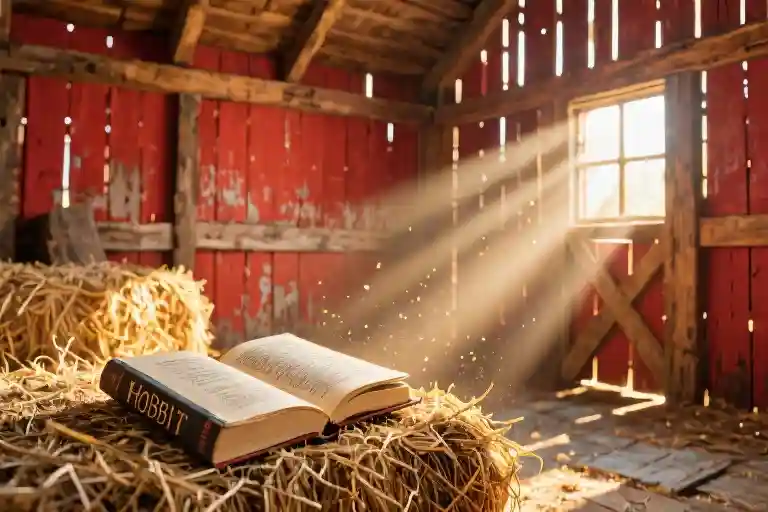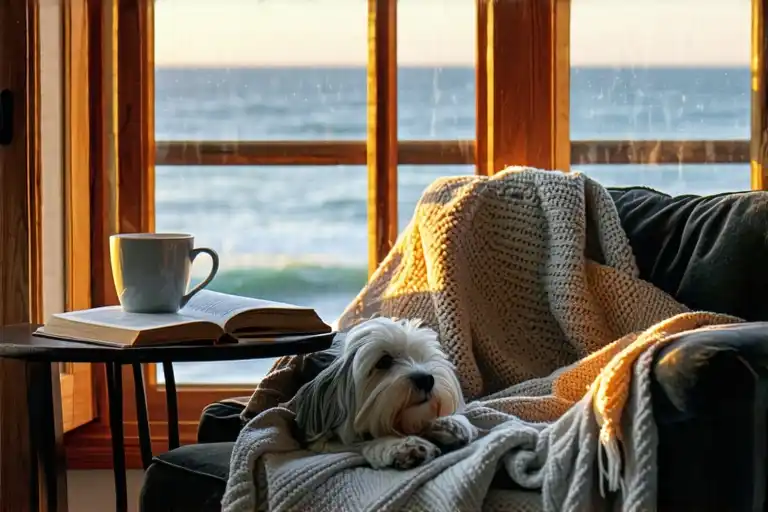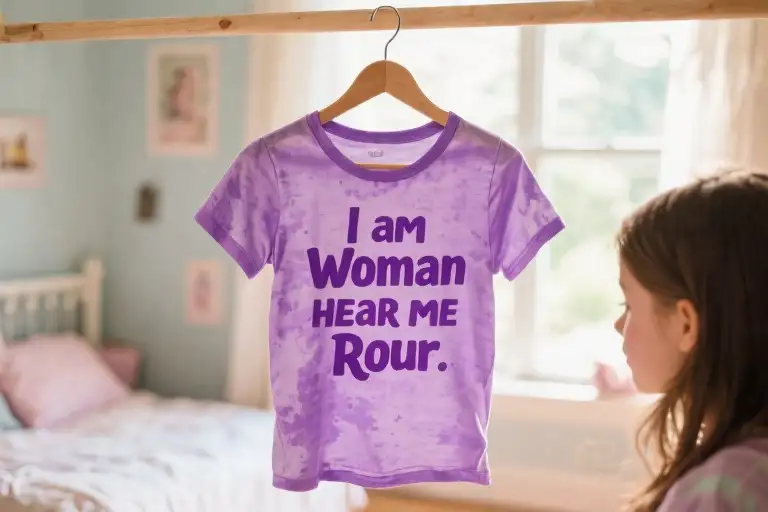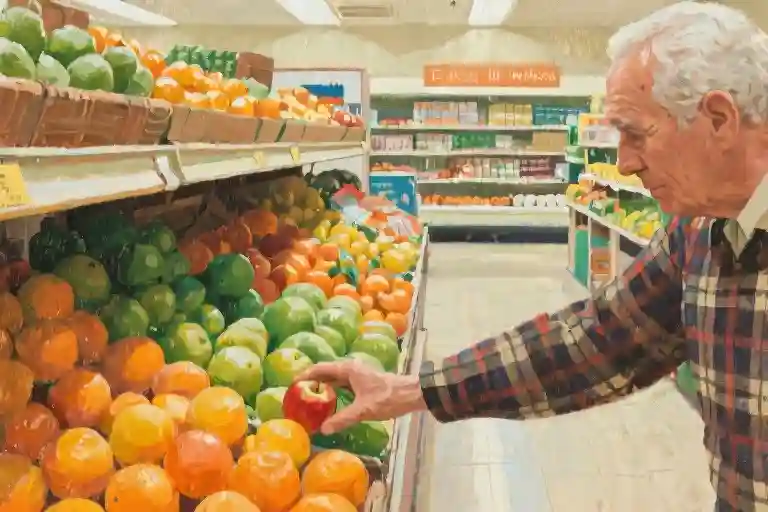The first time I met Bilbo Baggins, I was eight years old, curled up in the hayloft of our weathered red barn. Dust motes danced in the slanted afternoon light filtering through the wooden slats as I traced my fingers over the embossed gold letters on the book’s spine. He wasn’t real, of course – this hobbit from a land called Middle-earth – yet in that moment, his presence felt more tangible than the distant laughter of children I’d never get to play with.
This was rural Midwest America in the early 1970s, where our family farm stretched across rolling hills ten miles from the nearest town. We had electricity and running water, but lived what modern folks would call an off-the-grid existence. Our two sprawling vegetable gardens provided most of our meals, supplemented by livestock we raised ourselves. The barn housed not just our horses and the ever-present feral cats, but something far more precious to a lonely child – stories.
Looking back, it was a privileged childhood in many ways. Safe. Simple. Surrounded by love and open spaces. My parents worked hard to give us stability, and my older brother – though six years my senior – provided occasional companionship. But the geography of our isolation created invisible walls. The closest potential playmate lived a thirty-minute bike ride away down treacherous gravel roads, making spontaneous friendships impossible. Every social interaction required elaborate parental coordination – phone calls, schedules, round-trip drives that felt like expeditions.
So I learned the quiet rhythms of solitude. The way morning fog clung to the pastures like cotton batting. The secret language of barn cats weaving between my legs. The particular smell of sun-warmed grass that still transports me back decades later. It was peaceful, yes, but also profoundly lonely in ways I couldn’t articulate until I discovered that battered copy of The Hobbit, its pages smelling of damp paper and possibility.
What followed wasn’t just a childhood shaped by books, but a lifeline cast across generations and continents to a fictional creature who understood the paradox of craving adventure while cherishing home. Bilbo Baggins became my secret companion, his journey mirroring my own small rebellions against isolation. In those pre-internet days when farm kids like me measured distance in bicycle stamina rather than Wi-Fi signals, stories didn’t just entertain – they saved us.
The Magical Encounter in the Barn
The summer I turned eight, sunlight streamed through the weathered cracks of our red barn, painting golden stripes across the hay bales where I’d built my secret fort. It was there, between the scent of dried alfalfa and the distant clucking of hens, that I first met Bilbo Baggins. The book’s spine cracked like a tiny thunderclap when I opened the battered copy of The Hobbit, its pages the color of weak tea from years of waiting in some forgotten box.
Dust motes danced in the sunbeams as I traced my finger along the opening paragraph, the words tasting of adventure even before I understood their full meaning. That moment – the rough hemp of the burlap sack beneath me, the warm wood grain against my back, the sudden hush of the barn cats stopping their prowling – became the quiet earthquake that shifted my childhood. Bilbo wasn’t just a character in a story; he was the friend who arrived precisely when needed, without requiring parental coordination or a thirty-minute bike ride down gravel roads.
Three details made that afternoon unforgettable:
- The physical book itself – Water stains warped the lower corners, creating miniature landscapes that mirrored the Misty Mountains in the story
- The discovery spot – Tucked behind my father’s old milking cans, as if some previous owner had intentionally created a literary treasure hunt
- The immediate kinship – Unlike the heroic figures in my Sunday school books, here was someone who preferred pantry shelves to battlefields, yet still answered when adventure called
That dog-eared paperback became my constant companion that summer. I’d read chapters aloud to the barn cats (who proved more attentive listeners than my brother’s hunting dogs), and trace the crude map of Wilderland with a grubby finger, imagining our wheat fields as the Lone-lands. The hayloft transformed into Bag End whenever I needed escape from chores or loneliness, the rhythmic chewing of cattle below substituting for hobbit-hole clocks.
What made this discovery so pivotal wasn’t just the story’s content, but its timing and context:
- A childhood where entertainment meant creating your own adventures
- A social landscape where the nearest potential playmate lived beyond reasonable biking distance
- The particular magic of finding something wondrous in an utterly ordinary setting
Years later, adult me would understand how J.R.R. Tolkien’s themes of humble courage resonated with farm kids. But in that sunlit barn, all I knew was that Bilbo’s voice in my head sounded remarkably like our neighbor Mr. Peterson telling fishing stories – comforting, slightly mischievous, and full of unexpected wisdom.
The Farm Childhood: Loneliness Within Ten Miles
Growing up on that Midwestern farm in the 1970s was like living inside a snow globe – peaceful, self-contained, and slightly disconnected from the outside world. Our family operated in that delicate balance between self-sufficiency and isolation that characterized many rural American households of that era. The two sprawling gardens flanking our farmhouse weren’t just hobbies; they represented nearly half our yearly sustenance, their neat rows of tomatoes, corn, and beans standing like silent soldiers against hunger. Every summer morning began with checking the progress of these green wards, fingers brushing against dewy leaves as the rising sun painted the fields gold.
The barn cats formed their own wild society in the shadowy corners of our red wooden barn. These weren’t the pampered pets of suburban households but working felines, their mottled coats bearing the scars of territorial disputes. Yet they tolerated my childhood intrusions, sometimes even curling up beside me as I read in the hayloft. Their independence fascinated me – coming and going as they pleased, answering to no human schedule. In many ways, those feral cats lived more freely than I did, despite our warm house and full pantry.
Horseback riding wasn’t recreation but transportation and responsibility. Our two mares, Daisy and Buttercup, needed daily exercise regardless of weather. Those rides across our property became my first taste of autonomy, the rhythmic clopping of hooves marking time as I explored the same familiar trails. The pastures stretched endlessly in every direction, yet somehow always felt like they ended exactly where my parents’ voices could no longer reach me. Even at full gallop, I never quite outpaced that invisible boundary of childhood.
Social connections required logistical planning that would baffle today’s digitally-connected children. My closest friend lived a thirty-minute bike ride away down winding gravel roads that turned treacherous after rain. Playdates depended entirely on parental coordination – someone available to drive, someone willing to host, schedules aligning like some rare celestial event. The irony wasn’t lost on me even then: surrounded by all this open space, yet so constrained in human connections. That half-hour distance might as well have been an ocean for how often we managed to cross it.
Winter magnified this isolation. When snowdrifts blocked the rural routes, our farm became an island. School cancellations meant not snowball fights with neighbors, but solitary adventures tracking animal prints across white fields. The silence of those snowbound days pressed against the windows, broken only by the occasional whinny from the barn or the crackle of the wood stove. In those moments, the self-sufficiency that usually filled me with pride took on a different quality – not just independence, but separateness.
Yet this isolation cultivated unexpected strengths. Without constant peer interaction, I developed an early comfort with solitude that many adults never achieve. The rhythms of farm life – feeding animals at dawn, harvesting vegetables at their peak, observing the subtle changes of seasons – instilled a patience increasingly rare in modern childhoods. Those long stretches between social interactions made each visit precious, teaching me to savor human connection rather than take it for granted.
The very constraints that sometimes chafed also protected. Everyone in our rural community knew each other, creating a web of watchful eyes that today’s parents might envy. My brother’s six-year age gap meant we inhabited different childhood universes, but it also meant I always had a protector at school. Even the barn cats, for all their wildness, never let a strange dog or predator near the homestead without raising an alarm. This was the paradox of my 1970s farm childhood – simultaneously expansive and confined, lonely yet secure, demanding independence while existing within clear boundaries.
Looking back through the lens of adulthood, I recognize how those years shaped my relationship with solitude. The child who sometimes longed for more playmates grew into someone who finds comfort in quiet spaces, who values self-reliance without romanticizing it. Those endless fields and empty hours became the crucible where I first discovered that loneliness and contentment could coexist – a lesson that would serve me well in adulthood’s inevitable solitary moments. The farm didn’t just grow crops; it cultivated a particular way of being in the world, one that balanced connection with self-sufficiency in measures I’m still unraveling decades later.
The Blizzard Night in Bag End
The winter of 1973 brought the worst blizzard our county had seen in decades. By mid-afternoon, the winds howled like wolves against the farmhouse walls, and the snow piled high enough to bury the fence posts. With school canceled and roads impassable, even my usual solitary wanderings to the barn were forbidden. The house felt smaller than ever, the silence between the storm’s wails stretching like taffy.
That’s when I remembered the book – the one with the strange little man on the cover that Dad had brought back from his last trip to the feed store. The spine cracked like kindling when I opened it, releasing the scent of old paper and someone else’s attic. I smuggled it up to the drafty attic, my sanctuary, where a single kerosene lamp fought bravely against the gloom.
Curled between stacks of National Geographic magazines and Grandma’s quilted blankets, I met Bilbo properly for the first time. My fingers turned pink with cold, but I barely noticed. Page after page, Tolkien’s words painted a world more vivid than our black-and-white television. The dwarves’ songs echoed in my head, their melody drowning out the wind’s moaning. When Bilbo outwitted the trolls, I laughed aloud to the empty attic, my breath making little clouds in the air.
Outside, the storm transformed our familiar pastures into an alien landscape. But inside those pages, I trekked through lands far more wondrous – through the Misty Mountains where goblins lurked, to the elven splendor of Rivendell. For those hours, I wasn’t a lonely farm kid waiting out a blizzard; I was part of a company of adventurers. The attic became my own Bag End, the quilt a traveler’s cloak, and the flickering lamplight our campfire.
Something shifted that night. Before, books had been school assignments or pictures to flip through. This was different – Bilbo’s story didn’t just entertain me; it housed me. Like him, I was an unlikely hero in my own quiet world, discovering that courage isn’t the absence of fear, but the decision that something else matters more. The snow still swirled outside, the roads remained closed for days, but I’d found a secret passage out of loneliness – one that began in a hobbit-hole and ended who-knows-where.
Years later, I’d recognize this as my first true experience of bibliotherapy, though back then I just knew that frozen afternoon held magic. That battered copy of The Hobbit (which I still own) became the first of many lifeboats books would provide. Whenever farm life felt too small or solitude too heavy, I learned to slip between pages like Bilbo slipping on his ring – disappearing into stories only to return enriched, changed, and never quite as alone as before.
Why Bilbo Baggins?
Of all the literary characters that could have stepped into my lonely childhood, it was Bilbo Baggins who became my unlikely companion. Not the mighty Aragorn, nor the wise Gandalf, but a reluctant hero who preferred his armchair to adventure. There was something profoundly comforting about this ordinary hobbit who discovered extraordinary courage within himself—a mirror to my own quiet existence on that isolated farm.
Bilbo’s duality spoke directly to my 8-year-old heart. Here was a creature who cherished his pantry full of cheese and pickles as much as I treasured our root cellar stocked with home-canned peaches. Yet when Thorin’s company arrived uninvited, he found the grit to leave his round green door behind. That tension between comfort and curiosity defined my own childhood. Our farm was my Bag End—safe, predictable, bordered by cornfields instead of the Shire’s rolling hills—yet I too harbored secret dreams of landscapes beyond the horizon.
Three aspects of Bilbo’s character became lifelines for me:
- The Reluctant Adventurer
Unlike the fearless heroes in most children’s books, Bilbo protested his quest from the outset. “We are plain quiet folk,” he insisted, echoing my own shyness. His eventual bravery wasn’t innate but earned—page by page, challenge by challenge. During long afternoons tending livestock alone, I’d whisper his line: “There is more in you of good than you know.” - The Homesick Traveler
Even while facing dragons, Bilbo never stopped missing his armchair. This gave me permission to both love our farm and yearn for more. When classmates mocked my homemade clothes or lack of TV knowledge, I remembered Bilbo defending his handkerchiefs to the dwarves—owning one’s differences as quiet acts of rebellion. - The Unexpected Leader
His most subversive quality was how competence crept up on him. By the time he outwitted Gollum with riddles, I realized heroism wasn’t about being the strongest, but the cleverest. That lesson shaped my approach to rural challenges—whether fixing fences or navigating high school years later.
Modern psychology might call this “parasocial bonding,” but in 1972, it simply felt like finding a kindred spirit. While other kids idolized sports stars or astronauts, my role model was a fictional homebody who carried a handkerchief and talked to spiders. Decades later, re-reading Tolkien’s description of Bilbo—”looking perfectly ordinary… except for the contented look on his face”—I recognize why he resonated. In a childhood where isolation often felt like inadequacy, Bilbo Baggins taught me that quiet lives could contain epic journeys of their own.
The Enduring Friends Between Pages
The same copy of The Hobbit that first introduced me to Bilbo Baggins still sits on my bookshelf today, its spine cracked from decades of rereading. The faded inscription on the flyleaf—”To my adventurous reader, Christmas 1973″—still brings back the scent of hay and煤油灯 from that winter night in the barn. This book became more than just pages; it was my first true understanding that stories could be companions when real ones were half an hour down a gravel road.
The Physicality of Memory
Running my fingers over the dog-eared chapter where Bilbo outwits Gollum, I’m transported back to the tactile experiences of my farm childhood:
- The roughness of barnwood against my back as I read
- The way the oil lamp made shadows dance across the page during blizzards
- The satisfying snap of the hardcover closing after a marathon reading session
These sensory memories hold more vividness than many real interactions from that time. Books like this didn’t just distract from loneliness—they transformed it into something sacred. When modern psychology discusses “solitude versus loneliness,” I recognize that distinction in my eight-year-old self clutching this book while snow piled against the window.
Bilbo’s Lasting Lesson
What makes this particular story endure? The answer lies in Bilbo’s paradoxical nature:
- He was relatable – A homebody thrust into adventure, much like a farm kid dreaming beyond the horizon
- He made smallness heroic – His victories came through wit rather than strength, validating quiet children
- He always returned – His love of Bag End mirrored my own attachment to the farm, proving you could explore without rejecting home
This trifecta made Tolkien’s creation the perfect companion for a child navigating the tension between safety and curiosity. Where other heroes demanded emulation, Bilbo offered companionship.
The Modern Paradox
Today’s children face a different isolation—surrounded by digital connections yet starved for the profound bonds I found in that battered book. Our contemporary solutions often involve:
- Structured playdates (vs. my unsupervised reading time)
- Curated educational apps (vs. dog-eared paperbacks)
- Constant stimulation (vs. the creative space of boredom)
Yet the human need remains unchanged. The underlined passage where Gandalf tells Bilbo “You’ll have a tale or two to tell when you come back” now speaks to me as an adult recognizing how those solitary reading hours shaped my life’s narrative.
Closing the Cover
As I replace the book on the shelf, the spine falls open automatically to “An Unexpected Party.” Some relationships transcend time—between reader and character, between past and present selves. The final truth gleaned from forty years of revisiting this story:
“Some loneliness can’t be cured by people… because it was never meant to be. Those quiet spaces are where we meet the characters who help us become who we’re meant to be.”





